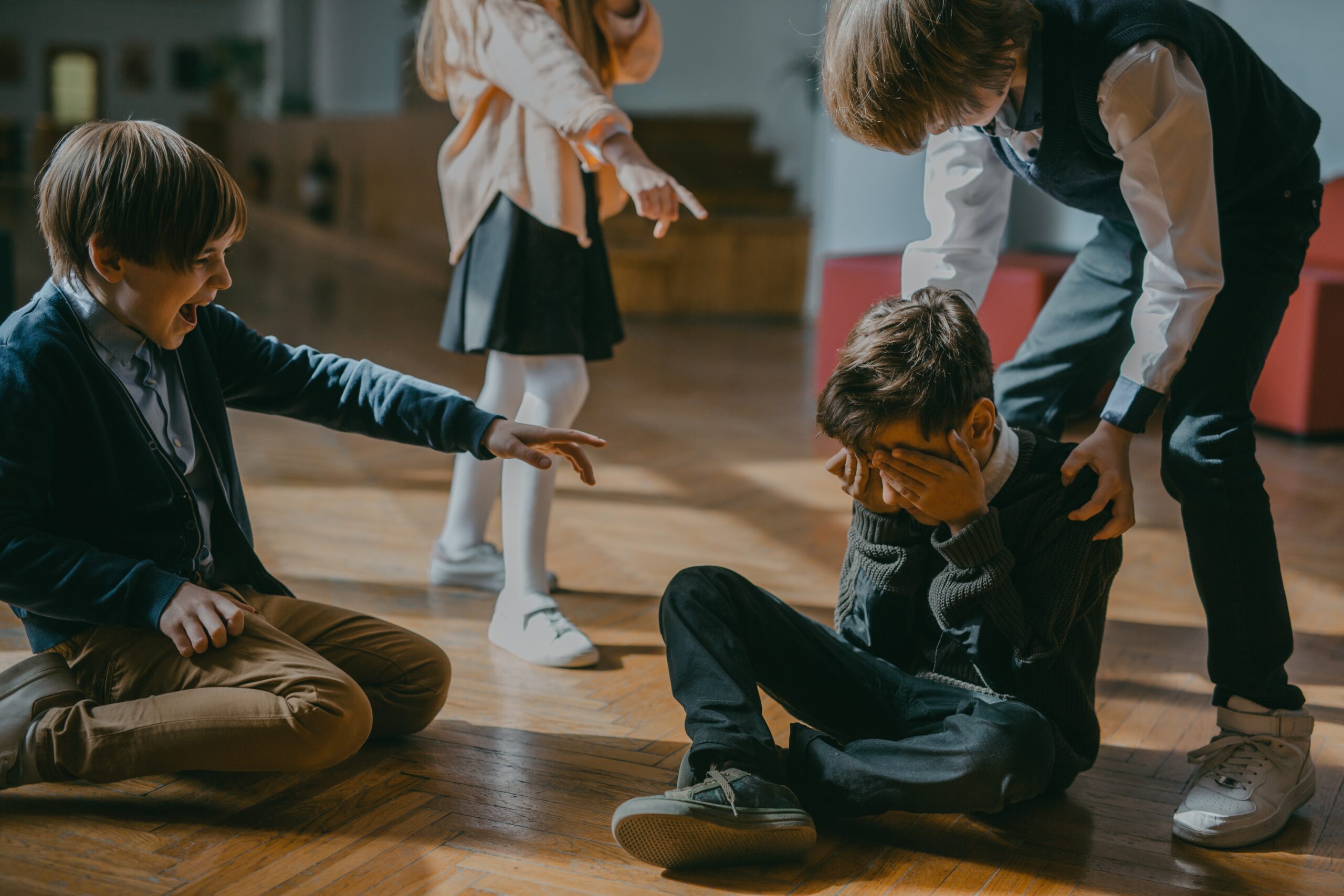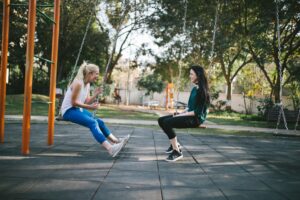By Professor Tony Attwood and Dr Michelle Garnett
Why are autistic students so frequently the victims of bullying? From our extensive clinical experience, we have found that there are usually many reasons. The biggest is that they are perceived as easy victims due to often being alone and not having a group of friends for protection. Due to low self-confidence, they often have the posture and body language of someone insecure and vulnerable. Due to both low self-esteem and social status they can be perceived as being a relatively ‘soft target’, i.e., someone unlikely to be assertive or able to retaliate in a way that could cause discomfort to the ‘predator’.
Due to difficulties with social reasoning and Theory of Mind (perspective-taking) abilities, they may also lack the ability to determine if an action or suggestion was deliberate or accidental, whether teasing is friendly or malicious and the difference between humour and insult. Bullying can occur for autistic students of all ability levels, including children attending a special school (van Roekel, Scholte & Didden, 2010). The study found that autistic adolescents who were frequently bullied sometimes misinterpreted non-bullying situations as bullying. They had become over-sensitised and quick to react without analysing intentions.
The autistic child may also lack conflict-resolution skills and be a source of entertainment when distressed. Recent research has added two more reasons: not being optimally tuned to social situations and resisting change (Forrest, Kroeger & Stroope, 2020). The resistance to change means that the autistic student’s reaction and response are predictable, with difficulty acquiring more effective responses. Their intense emotional reaction also encourages the child who engages in bullying (Cappadocia et al, 2012).
The prevalence of being bullied
A study of over 1200 parents of autistic children explored the prevalence of their child being bullied over a one-month period. Thirty-eight percent of the children were bullied occasionally, with a further 28% being bullied frequently. Thus, most autistic children experienced some form of bullying over the month (Zablotsky et al., 2013). A study by Schroeder et al. (2014) confirmed high rates of bullying for autistic students, with 40% of their autistic research participants experiencing daily victimisation and a further 33% experiencing victimisation two to three times a week. A study by Fisher and Taylor (2016) of autistic adolescents found a prevalence of peer victimisation of 73%, with a prevalence of only 10% in non-autistic adolescents.
The signs of being bullied
The signs of being bullied can be difficult to detect unless parents and teachers are looking for signs, they include peer rejection, fewer birthday party invitations, or being picked last for team sports (Kloosterman et al., 2013; Schroeder et al., 2014) Other subtle expression of bullying are poking and having shoelaces tied together (Fisher & Taylor, 2016).
There may be physical evidence, such as lost or damaged possessions, or torn clothing, and medical evidence, such as bruising, injuries, stomach-ache, headaches and difficulty getting to sleep. Psychological evidence includes increased anxiety, especially before school, depression, school refusal and responding violently to bullying leading to suspension. There can also be signs of a lack of trust in peers, even paranoia, and a change in the special interest to a fascination with weapons and violent films with drawings of retribution and retaliation.
When parents ask about experiences of bullying at school, there may be a reluctance to disclose those experiences as disclosure means re-experiencing the emotions. There may also be aspects of alexithymia such that the autistic child or adolescent has considerable difficulty describing their thoughts and feelings about being bullied using conversational speech.
Assessment of being bullied
A new bullying experiences assessment instrument has been designed for autistic children and adolescents (Morton et al., 2022). The 22-item Assessment of Bullying Experiences (ABE) assesses verbal, physical, relational, and cyber victimisation using examples of bullying experiences that include:
- Name-calling
- Taunting
- Teasing
- Mocking or mimicking
- Direct: hit, push, shove
- Indirect: hit, push, shove
- Damage possessions
- Group exclusion
- Ignored
- Exclusion from an online group
- Online impersonation
- Social media insults
- Spreading rumours
- Held down or restraint
- Physically take an object
- Knock food/item from hands
- Teased for joining a group
- Provoked to have an outburst
- Hurtful digital messages
- Hurtful post online
- Embarrassing photo/video
The assessment includes direct interpersonal bullying experiences at school and on social media. Home may not be a sanctuary from bullying in terms of cyberbullying and bullying from siblings.
We now have a new web-based touchscreen app to assess self-reported trauma exposure and symptoms in autistic children aged 8-14 (Hoover & Romero, 2019). The app has eight trauma exposure items, including bullying and teasing.
Disclosure of being bullied and support
A range of potential responses to bullying includes seeking help from teachers, friends, classmates, and parents and coping alone (Humphrey & Symes, 2010). When telling a teacher, the question can arise of which teacher or teacher assistant to tell and whether the teacher can or wants to rectify the situation. We have found that there can also be the issue of peer disapproval for disclosing bullying to teachers. Class peers may consider ‘dobbing’ a fellow student as a greater social ‘crime’ than the bullying. Autistic students are more likely to confide in a friend if the friend is perceived as being able to do something about the situation or has some social influence over the bully.
Parents are often the last resort in terms of support, sometimes due to feeling uncomfortable having their parents involved in their school life and parents being perceived as unable to provide support during and immediately after being bullied. Research suggests that parenting stress also decreases the likelihood of disclosing bullying to parents (Weis et al, 2015). When parents had low levels of stress, and there was open communication on problems at school, bullying could more easily be disclosed. In families that experienced high levels of stress, disclosure is less likely.
Coping alone often occurs with responses varying from ignoring the bullying and just walking away to acts of violence being seen as the only course of action to stop the bullying. Intervention strategies must include exploring and using a more comprehensive range of responses when violence has proved effective.
The effects of being bullied
As clinicians, we know the psychological effects of bullying are devastating, contributing to a range of mental health problems. It is a major cause of school refusal and suspension, often because the victim has become angry and reluctantly retaliated (Bitsika, Heyne & Sharpley 2021). It can contribute to developing an anxiety disorder due to constant fear of a bullying ‘attack’ or ambush each day and knowing there is no way to prevent such painful emotional experiences. The derogatory and provocative comments and actions may be internalised and believed by the victim, contributing to low self-esteem and clinical depression (Kim & Lecavalier, 2021; Ung et al., 2016) and suicidality (Halloran, Coey and Wilson, 2022). As so many interactions with peers are associated with being bullied, and so few positive social interactions are experienced, a sense of paranoia can develop based on the reality of their interactions with peers at school.
We increasingly recognise that one of the reasons for camouflaging or masking autism is to avoid being bullied (Cage & Troxell-Williams, 2019; Chapman et al., 2022). We also recognise a link between bullying and the development of Anorexia Nervosa (Brede et al., 2020) and gender dysphoria (Chang et al., 2021).
By being so sensitive to frequent bullying and having difficulty reading the intentions of others, an autistic child or adolescent may not be able to differentiate between friendly and unfriendly teasing, which can inhibit the development of a true friendship. Also, others may create a distance between themselves and the autistic student to avoid becoming targets themselves. This adds to a sense of loneliness and rejection. The autistic student may have few friends to provide protection and safety in numbers and have friends to calm the anguish and dissolve the despair, with no words or actions of support and compassion to create greater self-esteem and put the event in perspective. Thus, the effects of bullying go deeper and last longer for autistic students than non-autistic students.
Strategies to reduce experiences of being bullied
Research has confirmed our clinical experience that if peers intervene, over 50% of bullying episodes will stop (Cappadocia et al., 2012). Peers need to be educated about the effects of bullying on autistic students and actively encouraged to intervene. There will also be benefits in extending an autistic student’s social network to be less isolated and a more identifiable target and being able to call on the support of their friends (Hebron & Humphrey, 2014).
A study by Etherington (2007) evaluated the creation of a team of peer supporters for an autistic year eight student. The school chose six students, including two boys who were notorious for bullying the autistic student and two girls who had previously been socially supportive. A six-session training programme in support techniques and mentoring was held on a weekly basis during lesson time. A plan was agreed upon to provide support during break times. The team members recognised that sometimes the autistic student wanted to be alone during the breaks, and he could opt into or decline companionship. The peer supporters set up a rota to take turns to be ‘on call’ at each break. There was a significant reduction in the number of reported incidents with the following comments from the autistic student:
“Now I’ve got my peer supporters, I don’t feel alone anymore. I don’t keep thinking I’m going to get into trouble or do the wrong thing. I’m not frightened or anxious about coming to school anymore.
My peer supporters have really helped me. I can talk to them, and they will help me to know if what I am doing is appropriate. Sometimes I don’t know if people are trying to be unkind to me but I can ask one of my support group and they can tell me.
Once, this girl asked me to stand on a bench and sing a song. I did it, but I think she wanted to humiliate me. I asked one of my supporters. He said I shouldn’t do what people tell me to do if it makes me feel bad inside. I should just say no and walk away. I think he is right. I think I can trust him.”
Carol Gray (2010) has explored bullying using Social Stories on themes such as:
- What is bullying?
- Bullying: What to think, say and do
- My team
- Learning to respond to bullying
We have also found that her strategy of Comic Strip Conversations can help teachers and parents explore the autistic child’s perspective of events and explain the thoughts and motivations of those who engage in bullying. Parents and teachers can access literature and resources on bullying and autism, such as No Fishing Allowed: Reel in Bullying (Gray & Williams, 2006) and the books on bullying published by Jessica Kingsley publishers www.jkp.com
We now have social skills video games such as the Secret Agent Society specifically designed for autistic students, which includes components on managing bullying (Beaumont et al, 2021). We also have resources to improve online safety for autistic children and teenagers (Lonie, 2015).
Bullying can result in signs of trauma, and Eye Movement Desensitization and Reprocessing (EMDR) has been confirmed as an effective treatment for trauma in autistic adults (Lobregt-van Burren et al 2019). The study found that 50% of participants had flashbacks of school bullying. EMDR could be considered for an autistic child or adolescent who has been traumatised by bullying.
Where to from here?
There will be a greater explanation of the reasons why autistic students are so frequently bullied and coping strategies at school and home in our online course Autism and Bullying at School:
References
Beaumont et al. (2021). Journal of Autism and Developmental Disorders 51, 3637–3650.
Bitsika, H. & Sharpley (2021). Journal of Autism and Developmental Disorders 51, 1081–1092.
Brede et al. (2020). Journal of Autism and Developmental Disorders 50, 4280-4296
Cage & Troxell-Williams (2019). Journal of Autism and Developmental Disorders 49, 1899-1911
Cappadocia et al. (2012). Journal of Autism and Developmental Disorders 42.
Chang et al (2021) Autism 26 1-14.
Chapman et al (2022) Research in Autism Spectrum Disorders 99 102069
Etherington (2007) Good Autism Practice 8, 37-44.
Fisher and Taylor (2016) Autism 20, 402–411.
Forrest, Kroeger and Stroope (2020). Journal of Autism and Developmental Disorders 50, 560-571
Halloran, Coey and Wilson (2022) Clinical Psychology Review 93.
Hebron & Humphrey (2014). Autism 18.
Hoover & Romero (2019). Journal of Autism and Developmental Disorders 49, 1686-1692
Humphrey & Symes (2010). Journal of Research in Special Educational Needs 10, 82–90.
Kim and Lecavalier, (2021) Research in Autism Spectrum Disorders 88
Kloosterman et al (2013) Research in Autism Spectrum Disorder 7, 824-832
Lobregt-van Burren et al (2019). Journal of Autism and Developmental Disorders 49, 151–164.
Schroeder et al (2014) Journal of Autism and Developmental Disorders 44
Ung et al (2016) Research in Autism Spectrum Disorders 32, 70-79
van Roekel, Scholte and Didden (2010) Journal of Autism and Developmental Disorders 40, 63-73
Weis et al (2015) Autism Research 8, 727-737.
Zablotsky et al (2013). Journal of Developmental and Behavioral Pediatrics 34, 1-8
Resources
Gray C. and Williams (2006) No Fishing Allowed: Reel in Bullying Student workbook and teacher manual. Arlington, Future Horizons
Gray C. (2010) The New Social Story Book Arlington, Future Horizons
Lonie, N. (2015) Online Safety for Children and Teens on the Autism Spectrum: A Parent’s and Carer’s Guide London Jessica Kingsley Publishers
Secret Agent Society www.sst-institute.net




